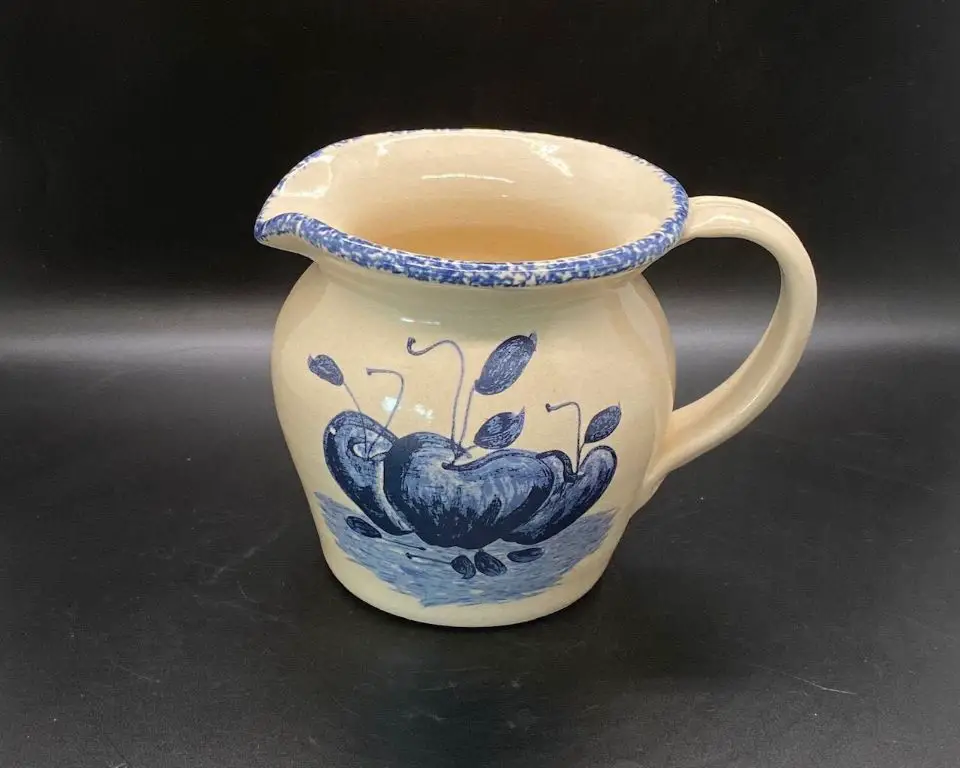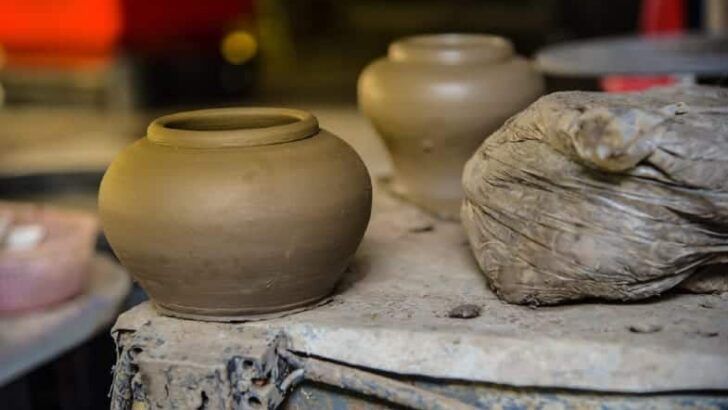When Did Casey Pottery In Marshall Texas Close?
Casey Pottery was a stoneware pottery company located in Marshall, Texas. Founded in 1909 by J.D. Casey, the company specialized in utilitarian stoneware objects like crocks, jugs, and flower pots. Casey Pottery operated for over 60 years before closing its doors in 1973.
Located in northeast Texas, Casey Pottery became well known for its distinctive earth-toned glazes and classic forms during the first half of the 20th century. The pottery took advantage of the abundant clay resources found in the region and built a reputation for quality and affordability.
For decades, the Casey name was synonymous with stoneware in Texas and beyond. At its peak, the company produced thousands of pieces each week and retailed them nationally. The closing of this iconic Texas pottery left a significant void in the market.
Founding and Early History
The Casey Pottery company was founded in 1931 in Marshall, Texas by W.B Casey. Casey was originally from Sevier County, Tennessee and had moved to Marshall in the late 1920s. He recognized the rich clay deposits around Marshall and believed they would be ideal for pottery production. Casey leased an old cotton warehouse and opened the Casey Pottery plant in 1931.
The pottery produced utilitarian stoneware items like jugs, churns, crocks, and bean pots. According to the Casey Pottery Pitcher Blue & White Vintage, the early pottery items were a tan/brown color with an Albany glaze. Casey Pottery became known locally for its high quality stoneware. The company expanded in the 1930s and added new glazes and colors like blue and white.
Products and Manufacturing
Casey Pottery was known for producing a wide variety of stoneware pottery products. Some of their most popular items included jugs, crocks, bowls, flower pots, and planters (Vintage Hand Crafted Casey Pottery Co. Seed Company). The pottery was often stamped with the “Casey Pottery Co Marshall Texas” mark to identify it.
The manufacturing process at Casey Pottery involved skilled potters hand-throwing pieces on pottery wheels. The wet clay pieces were set aside to slightly dry before being processed through finishing steps like trimming excess clay and carving decorative details. Once completely dried, the pottery was loaded into large gas-fueled kilns reaching over 2,000°F to fire the clay into hardened stoneware. The fired pieces were sometimes glazed before a second firing to seal in the glaze (Casey Pottery Company, LLP). Casey Pottery took pride in creating handmade functional stoneware using traditional pottery techniques.
Expansion and Growth
Founded in 1948, Casey Pottery experienced significant growth and expansion over the years. In the 1960s, the company expanded from a small operation into a major manufacturer of ceramic dinnerware and art pottery with over 150 employees (Etsy).
By the 1970s, Casey Pottery had two manufacturing plants and was producing over 12 million pieces per year, distributing products across the United States (Etsy). The larger factory produced lower-priced dinnerware while the original factory focused on higher-end art pottery.
In 1976, Casey Pottery opened a retail outlet next to the factory in Marshall, TX which allowed customers to purchase seconds and discontinued items directly. This drew many collectors and pottery enthusiasts to visit the store.
According to the WarnTracker database, Casey Pottery employed over 300 people at its peak in the late 1970s before facing challenges in the 1980s with competition from overseas manufacturers (WarnTracker).
Challenges and Changes
Casey Pottery faced numerous challenges starting in the late 1970s that eventually led to its closure in 2002. One major challenge was the economic recession that hit the United States in the early 1980s. This led to a decline in consumer spending and demand for Casey Pottery’s products (Source 1). At the same time, the company faced increasing competition from cheaper imports coming from Asia and other regions (Source 2). Casey Pottery struggled to compete on price with these mass-produced imports.
Other challenges for Casey Pottery included rising costs for materials, energy, and labor. This further squeezed profit margins. To combat these challenges, the company tried various strategies like introducing new products and streamlining operations. But ultimately these efforts were not enough to turn around the declining performance. By the late 1990s, sales and production had slowed considerably from the company’s heyday. After struggling for many years with these economic and competitive challenges, Casey Pottery finally shut down operations in 2002.
Closure

Casey Pottery in Marshall, Texas ceased operations and closed down in 1987. The company had been in business since 1906 when it was established by H.F. Casey as the Marshall Art Pottery Company. Over its 81 year history, Casey Pottery became known for producing art pottery in a wide variety of forms such as vases, pitchers, jardinières, and planters, often with bright colored glazes.
In 1987, after struggling with overseas competition particularly from Asia, Casey Pottery ultimately could not sustain its manufacturing operations. Rising costs and declining sales led the owners to make the difficult decision to close the historic pottery company. The closure was seen by many as the end of an era in Marshall’s long history of pottery manufacturing. Approximately 100 employees lost their jobs when the factory shut down after over eight decades of continuous production.
While Casey Pottery ceased operations, its legacy and influence as a major Texas pottery lives on through collectors and admirers of its handcrafted art pottery produced during the 20th century. Vintage Casey Pottery pieces remain popular with collectors and antique enthusiasts today.
Impact and Legacy
Casey Pottery had a significant impact on the Marshall community during its years of operation. At its peak, the pottery employed over 400 people and was one of the largest employers in Marshall (Source). The jobs at the pottery provided steady income for many local families. Even after the pottery closed down, its legacy continued in Marshall. Many former employees went on to open their own pottery shops and studios in the area, keeping the tradition alive.
Today, authentic Casey Pottery pieces are highly collectible and sought after by antique collectors and dealers (Source). Vintage Casey Pottery can sell for high prices at auction and online. The unique glazes and designs of Casey Pottery make it easily recognizable. Its handcrafted, artisanal style stands out from mass-produced ceramic wares. For those familiar with the history of Marshall and its local industries, Casey Pottery remains a point of pride and a symbol of the town’s manufacturing legacy.
Former Employees
According to reports, many former employees of Casey Pottery in Marshall, Texas have fond memories of their time working at the historic pottery company. Though the pottery closed its doors in 2007 after over 100 years of operation, it left a lasting impact on the lives of those who dedicated their careers there.
In interviews, a common theme arises – that Casey Pottery felt like a family. Many employees worked there for decades and formed close bonds with coworkers. They took pride in producing high quality ceramic pieces that were popular across the United States. Former employees describe the work as difficult but rewarding.
While the closure was unfortunate, former employees look back on their time at Casey fondly. They appreciate the opportunities, friendships, and skills they gained during their time at the historic Marshall pottery company.
Casey Pottery Today
The original Casey Pottery in Marshall, Texas closed its doors in the mid 1990s after over 60 years of operation. However, the pottery maintains a loyal following among collectors to this day.
Vintage Casey pottery continues to be sold through online marketplaces like Etsy, eBay, and Poshmark, with prices ranging from $10 for small trinket pieces to over $100 for more ornate and rare items like bean pots and popcorn bowls (Source).
Some Casey pottery pieces are now considered quite valuable due to their scarcity. Collectors seek out the iconic “drip glaze” design that Casey was known for. Mid-century modern style enthusiasts also appreciate the retro look of vintage Casey wares.
While the original factory is closed, Casey’s legacy lives on through the work of its former potters. Some went on to open their own studios, continuing the traditions of handmade pottery-making in east Texas. The town of Marshall also honors Casey’s history through exhibitions at the Michelson Museum of Art.
Conclusion
Casey Pottery had a long and storied history in Marshall, Texas. Founded in 1927 by Walter B. Casey, the company grew to become one of the largest pottery manufacturers in the state, producing utilitarian stoneware, art pottery, and other ceramic products. At its peak, Casey Pottery employed over 400 people and was a major local employer.
While the company faced challenges over the decades, including ownership changes and shifting markets, it persevered for over 80 years before finally closing its doors in 2010. Casey Pottery left an indelible mark on Marshall and the surrounding area. Its high-quality stoneware and art pottery pieces are still collected and appreciated today as reminders of the company’s legacy.
Though the physical plant is now closed, Casey Pottery remains an important part of Marshall’s history and identity. The company demonstrated how a small-town pottery producer could achieve success and growth for many decades through quality manufacturing and sound business practices. Casey Pottery’s positive economic and social impact on Marshall will long be remembered.



